
Malvaceae
Plants of the Mallow Family
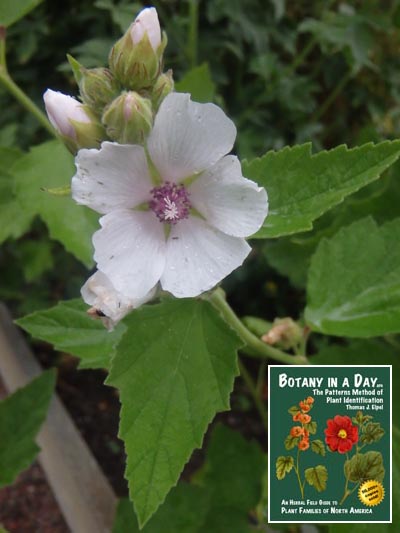
If you have seen a hollyhock or hibiscus flower, then you can recognize the Mallow family. Wild species may be smaller, but you will know you have a Mallow when you find a funnel-shaped flower with 5 separate petals and a distinctive column of stamens surrounding the pistil. There are also 3-5 partially united sepals, often surrounded by several bracts. Crush any part of the plant and rub it between your fingers. You will notice a mucilaginous (slimy) texture, even in seemingly dry, desert species.
Worldwide there are about 85 genera and 1500 species, including 27 genera in North America. Hollyhock, hibiscus, and cotton are members of this family. Cotton is the only member of this family with documented poisonous properties. All others seem to be safe for edible and medicinal uses. Okra is the edible fruit of a variety of hibiscus. Marshmallow was originally derived from the marshmallow plant shown here. Some additional members of the family can be used as marshmallow substitutes. The ground up root or seeds are covered with water and boiled until half the liquid is gone. Then the liquid is beaten to a froth and sugar is added. It should make something resembling whipped cream.
The plants contain natural gums called mucilage, pectin, and asparagin, which gives them a slimy texture when crushed. It is the presence of these gums that creates the marshmallow effect. The members of the Mallow family are mostly edible as a salad greens and potherbs, although not very commonly used, probably due to their slimy consistency. The flowers and seeds are also edible.
Medicinally, the mucilaginous quality of the Mallows may be used just like the unrelated Aloe vera or cactus: externally as an emollient for soothing sunburns and other inflamed skin conditions, or internally as a demulcent and expectorant for soothing sore throats.
Key Words: Key Words: 5 separate petals and a column of stamens. Mucilaginous texture.
Please e-mail Thomas J. Elpel to report mistakes or to inquire about purchasing high resolution photos of these plants.
Key to Genera in the Rocky Mountains
Read through the options and pick the closest match(es).
No bracts (modified leaves) beneath flowers.
Flowers cream-colored. Fruit is a capsule. Hibiscus trionum
Flowers yellow. Fruit forms a ring of seeds. Abutilon theophrasti
One to several bracts beneath flowers. Fruit forms a ring of seeds.
Plants 3-6 feet tall. Palmate, rounded leaves: Alcea
Plants 3-5 feet tall. Palmate, pointed leaves: Iliamna
Plants usually less than 3 feet tall. Mostly rounded leaves. Petal-ends notched: Malva
Plants less than 3 feet tall. Mostly rounded leaves. Flowers whitish. Petal-ends not notched: Sida
Plants less than 3 feet tall. Often deeply divided palmate leaves. Flowers orange: Sphaeralcea
Plants less than 3 feet tall. Deeply divided palmate leaves. Flowers white to pink, red, or lavender: Sidalcea
Plants less than 3 feet tall. leaves 3-5 parted. Hairy. Flowers reddish-purple: Callirhoe involucrata
Mallow: Malva
Return to Key
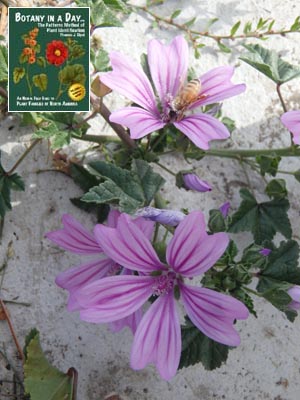
Tall Mallow: Malva sylvestris. Tall mallow is native to Europe, Asia, and northwestern Africa, but widely naturalized across the English-speaking world. Photographed in New Zealand. |
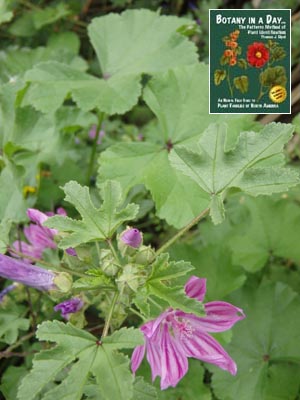 Tall Mallow: Malva sylvestris. The plant lives well under the blade of a lawnmower, but can grow to three or four feet tall if left uncut. |
 Malva sp. Cheese Mallow. Common across the U.S. Photographed near Rexburg, Idaho. | 
Foraging the Mountain West |
Wild Hollyhock: Iliamna
Return to Key
 Iliamna rivularis. Mountain Hollyhock. |  Iliamna rivularis. Mountain Hollyhock. |
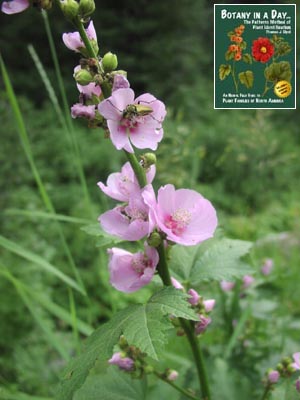 Iliamna rivularis. Mountain Hollyhock. Hyalite Canyon, near Bozeman, Montana. |

Foraging the Mountain West |
Common Hollyhock: Alcea
Return to Key
 Alcea rosea rosea (also known as Althaea rosea). Common Hollyhock. Cultivated. |
 Alcea rosea rosea (also known as Althaea rosea). Common Hollyhock. Cultivated. |
Scarlet Globe Mallow: Sphaeralcea
Return to Key
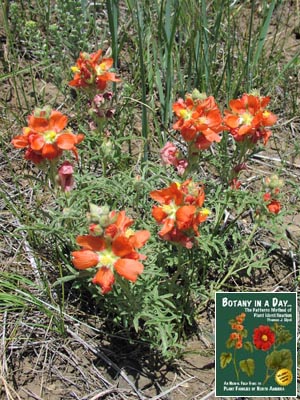 Sphaeralcea coccinea. Scarlet globe mallow. | 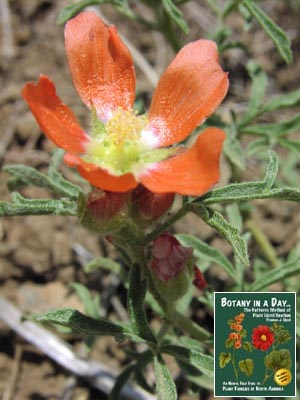 Sphaeralcea coccinea. Scarlet globe mallow. Pony, Montana |
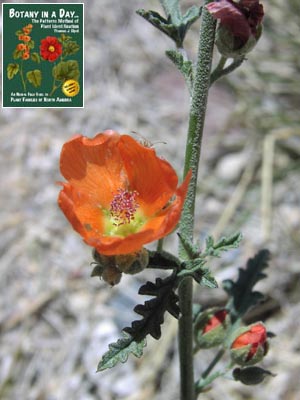 Sphaeralcea sp. Scarlet globe mallow. |  Sphaeralcea sp. Scarlet globe mallow. Fort Bowie National Historic Monument. Arizona. |
Also in the Mallow Family
 Hibiscus rosa-sinensis. Chinese hibiscus, a.k.a. China rose. |
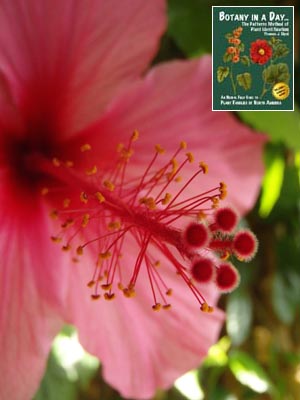 Hibiscus rosa-sinensis. Chinese hibiscus, a.k.a. China rose. |
 Gossypium hirsutum. Upland cotton. Arizona. |
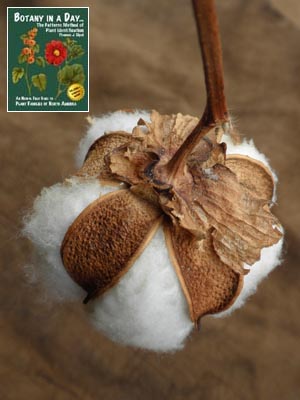 Gossypium hirsutum. Upland cotton. Arizona. |

Foraging the Mountain West |
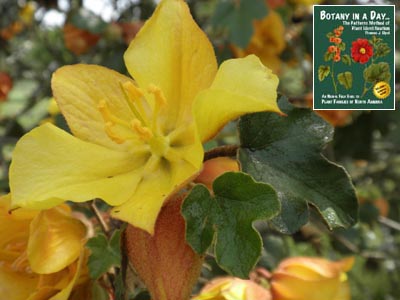 Fremontodendron californicum. California Flannelbush. |
There are more
Mallow Family pictures
at PlantSystematics.org.
Return to the Plant Families Index
Return to the Wildflowers & Weeds Home Page
|
Looking for life-changing resources? Check out these books by Thomas J. Elpel:
|





 Wildflowers-and-Weeds.com
Wildflowers-and-Weeds.com 

























